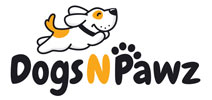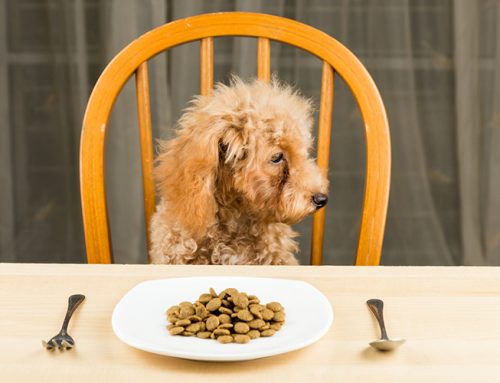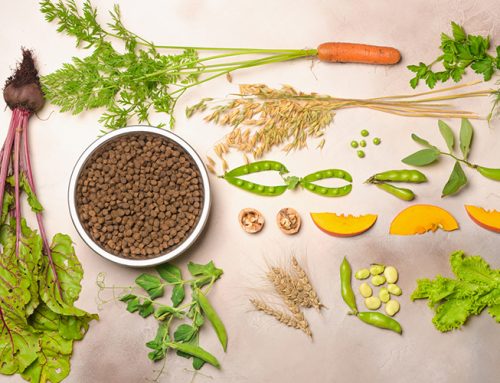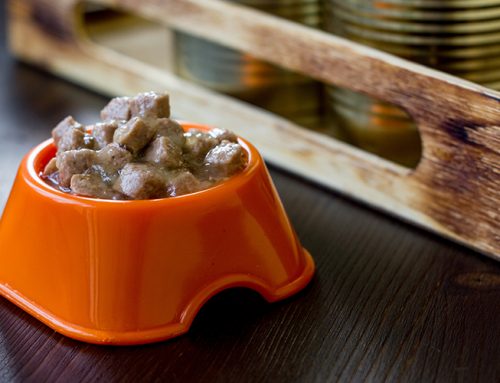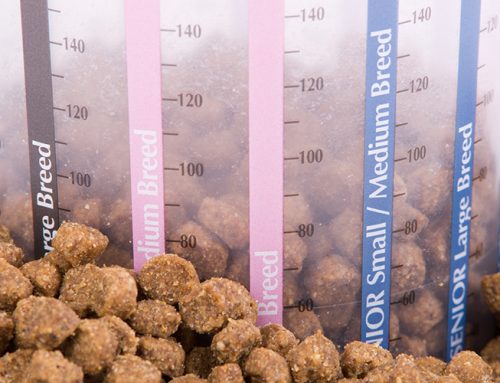Your Labrador Retriever stares longingly at the kitchen cupboard its food is stored in. Your Dachshund inhales its meal in seconds. Your German Shepherd devors any morsel that lands on the floor.
It may seem like your dog is always pining for food but that doesn’t mean your dog needs to eat all the time, or even that he or she is hungry. Some dogs just really love food.
Figuring out how much to feed your dog depends on a few things. You may not find the magic amount immediately, but your dog will be fine as you tweak its meal plan.
Factors to consider when determining how much food your dog needs
How much does your dog weigh?
The most basic way to figure out how much food your dog needs is its weight. A dog’s weight determines where to start for portion sizes. It’s obvious that a yorkie needs significantly less to eat than a collie does, but how much does a 40 pound dog need versus a 50 pound dog?
Most vets have a dog friendly scale. Otherwise, weigh your dog at home.
Dogs under 10 pounds (considered toy dogs) may not need any more than half a cup of food per day. Small dogs (10 to 20 pounds) eat between ¾ cups per day to 1 ⅔ cups per day.
Medium sized dogs at 30 pounds may eat around 1 ¾ cups, but a 50 pound medium dog needs closer to 2 ⅔ cups of food.
Large dogs are the most expensive to feed: they can be eating anywhere from 3 cups of dog food to 4 ½ cups for a 100 pound dog. A male Newfoundland is a big boy at up to 150 pounds, and may need to eat accordingly.
Does your dog eat raw, kibble or dehydrated?
The dog food industry is loaded with options and every dog owner (and dog!) has a preference in terms of product type. Raw, dehydrated, freeze-dried and kibble are among the most common dog food trends and they all have different recommended serving sizes. In addition, some raw food advocates recommend allowing your dog to fast, which means adjustments to portion sizes.
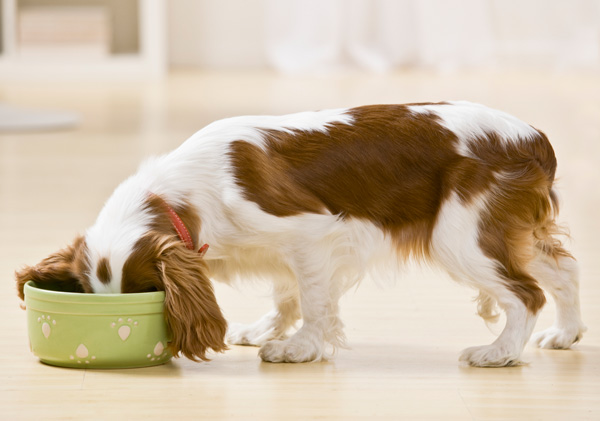
Food types are often measured differently. Raw food serving sizes are typically offered by weight (pounds, ounces) while dry types are measured in cups. The nutritional value in all these products vary widely and good quality supplements can round out any meal.
Check the manufacturers recommendations, but be prepared to tweak your dog’s meal intake depending on how its weight, health and overall energy levels are doing.
Does your dog get a lot of treats or extras?
Reward-based dog training requires lots of treats. Puppy owners, or dog owners who have recently adopted a new friend (or long time dog owners who undergo training) find that using treats is an effective way to encourage good doggie behavior. But all the calories add up.
There are training specific treats that are very small in size, but dogs still love. You can also break larger treats into small pieces. A small reward can be just as satisfying for your dog and will help manage calorie consumption, if you are concerned that your dog is prone to weight gain. Alternatively, if you’re going through a long training period, reduce your dog’s overall meal serving size.
If your dogs get bones for oral hygiene, you can reduce their normal food on days they get those, or count them as a meal. Marrow bones, for example, are high in calories.
What type of breed do you have?
Some dogs have more energy than others and need additional food, or be more naturally food motivated. These breeds tend to want to eat all the time quantities and will forage for anything their humans drop, or whatever they can get their mouths on outside. Some breeds are also more prone to weight gain, like labs, pugs and shepherds. Keep your dog’s breed in mind when fine-tuning its food intake.
How old is your dog?
Age plays a big factor in how much to feed. Puppies need more protein and nutrients because they’re growing! It’s critical to feed puppies food formulated just for them, because their nutrient requirements are different than those for an adult dog.
Older dogs, especially those that have become less active, likely require less food. Mature or senior dogs may require 20 percent fewer calories than a middle aged dog. However, don’t let your senior dog get too thin or frail. Also, check the salt content on the food you’re feeding a senior dog, especially if they have a medical condition like hypertension.
You may have to experiment with the perfect meal size for dogs of any age.
Does your dog have anxiety?
Anxious dogs tend to be highly alert and reactive. They’re prone to pacing and other nervous habits. Because of this, they may burn more calories than a relaxed dog. If your anxious pup doesn’t seem to be putting on any weight, or seems to be losing weight and is otherwise medically healthy, try increasing its food allotments, at least until it puts on some weight.
Slightly larger meals may be required for a few weeks until your dog’s ribs or shoulder bones aren’t sticking out.
As long as your dog doesn’t seem to be putting on an unhealthy amount of weight, your anxious dog may just need a little more nutritional support.
Is your dog active or does it prefer to lounge around?
Active dogs, like active people, burn more calories and require more food to maintain muscle mass and energy. A more active dog may require up to 20 per cent more food than the food producer’s basic recommendations, although most manufacturers offer serving size options for various levels of activity.
Does your dog have a medical condition?
Weight loss can be associated with illnesses, some of which are more serious than others. If your dog is suddenly losing weight and their food intake hasn’t changed, it’s time to pay a visit to the vet. Anorexia, inflamed bowels, pancreatic issues, metabolic diseases, and organ illnesses can all be preceded by weight loss. In particular, watch for sudden changes in weight in combination with accompanying symptoms like tiredness or changes in behavior.
Is your dog too thin, overweight, or just right?
Dogs come in all shapes and sizes and what is healthy for one is not necessarily the ideal physicality for another breed. A body condition scoring chart can help assess your dog’s overall weight.

Too thin
Your dog’s ribs, spine and shoulders jut out and are clearly visible. Your dog looks angular and has very limited muscle. Your dog’s waist is very clearly defined when viewed from above. The dog looks emaciated or ill. More food should be provided, after clearance from a vet that your dog doesn’t have any underlying medical conditions.
Just right
You can feel your dog’s ribs and spine, but the dog’s bones aren’t visible through its coat. From above, your dog’s waist is visible and it’s rib cage tapers naturally up towards it’s back legs. The dog has clear muscle mass. Your dog appears healthy and athletic.
Overweight
Your dog’s spine or bones are hard to feel and are covered by fat deposits. Your dog may look pear shaped from above and the abdomen is sagging, instead of leading upwards towards the dog’s back legs. A distended or swollen looking stomach is also a sign of obesity. Dogs with very short legs may have tummies nearly reaching the ground. A calorie reduction, or change, is probably in order. Check with a vet about the best way to support your dog towards a healthier body weight.
If you’re still not sure how much to feed your dog, try a dog food calculator.
